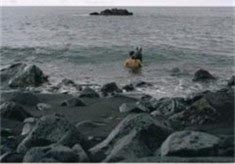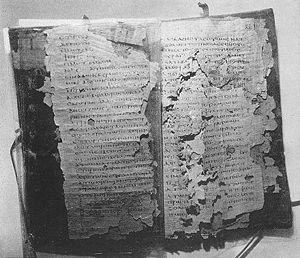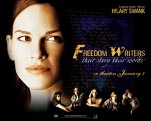

|
Beste lezer, Arno Reijnen staat heel open in het leven en registreert met zijn camera niet alleen mooie landschappen maar ook gezichten waar je met tederheid eindeloos naar kunt kijken. Het kan ook niet anders wanneer je als fotograaf niet alleen wat je ziet registreert maar tevens hoe je het ziet. En als je schoonheid ziet… Lees meer over Arno’s passie en over wat hem inspireert in zijn interview aan QUO Magazine. |
Dear reader, Arno Reijnen has a very open attitude in life and he captures with his camera not only amazing landscapes but also faces you can look at endless and tenderly. How else if you as photographer capture not only what you see but also how you perceive it. And when you perceive beauty... Read more about Arno's passion and about what inspires him in his interview to QUO Magazine. |
|||||||||||||||||||||
|
 Carlos Milhais  Faraújo  Pascal Duvet |
|
||||||||||||||||||||
|
In deze editie vind je inspiratie voor je huis, voor op je werkplek, voor de keuze van een boek, van een film, een muziek of zelfs een weekeinde in Frankrijk… Laat je inspireren door QUO Magazine! De november/december editie van QUO Magazine verschijnt op 28 oktober 2011 met het thema: ‘Viering’ In liefde Teresa Pinto Reageren: info@quomagazine.nl |
In this issue you will find inspiration for your home, for the workplace, for the choice of a book, a film, a music, or even for a weekend in France… Get inspiration from QUO Magazine! The November/December issue of QUO Magazine will be online October 28th with the topic: “Celebration” With love Teresa Pinto Reactions to: info@quomagazine.nl |
|||||||||||||||||||||
|
||||||||||||||||||||||
|
Tarot: de Maan van de Arcus Arcanum Tarot Petra Stam |
||
 Op de kaart is een landschap te zien dat wordt verlicht door het bleke maanlicht. Het is gereflecteerd licht, waardoor alles anders lijkt van hoe je de dingen in werkelijkheid zag. In de poort van een oude tempel staat een Maanpriesteres. De tempel dateert uit oude tijden, van voor mensenheugenis, en herbergt allerlei geheimen - het is immers een plek van verering en tegelijk een observatorium. Van daaruit leidt een smal pad naar de doorgang in een rotspartij aan de horizon. De wolf, een bewaker van de poort, huilt naar de Maan, en een kreeft kruipt uit de poel.
Op de kaart is een landschap te zien dat wordt verlicht door het bleke maanlicht. Het is gereflecteerd licht, waardoor alles anders lijkt van hoe je de dingen in werkelijkheid zag. In de poort van een oude tempel staat een Maanpriesteres. De tempel dateert uit oude tijden, van voor mensenheugenis, en herbergt allerlei geheimen - het is immers een plek van verering en tegelijk een observatorium. Van daaruit leidt een smal pad naar de doorgang in een rotspartij aan de horizon. De wolf, een bewaker van de poort, huilt naar de Maan, en een kreeft kruipt uit de poel.Alleen intuïtie, voorgevoelens en inspiratie blijken betrouwbaar te zijn om door illusies heen te kijken, om door bedrog heen te kijken en om door wanen heen te prikken. Het smalle pad is slecht veilig als het zelfvertrouwen is hersteld en geloof is verworven; meer nog omdat het de enige uitweg is! Rust en stilte helpen om onnodige sensaties en verwarring te vermijden. De uitdaging is dus om door de bomen het bos te zien: wat is echt en wat is een illusie, wat is intuïtie en wat is angst. Onbewuste activiteiten, emoties kunnen met je op de loop gaan. Het wijst op een periode van emotioneel beladen dromen, die een sterke invloed uitoefenen op het dagelijks leven. Neem de tijd om je tijdens de volle maan (deze en de volgende manen) bewust te worden van wat er in jou omgaat. Laat omhoog komen wat je voelt en ervaart en leer wie je bent als totale persoon, dus je onbewuste kanten en je bewuste kanten. De oude wijsheid zit in ons allemaal! |
||
|
Inspirational films John Schwab |
||
|
Most films that inspire us, do so with their heartfelt and genuine storyline of an underdog who stands up for what he believes, and against all odds, he comes out triumphant. We are inspired by stories of triumph over evil or against overwhelming odds. That is why for example boxing or sports stories are so popular, David and Goliath stories, little guy against big corporation or government, or stories about a shy, timid kid against a bully, because we want to cheer for the underdog and see him triumph. We love the emotional feeling that someday we too will triumph in our personal lives and make our hopes and dreams come true.
Other inspirational films follow our hero as he endures remarkable ordeals and survives to tell about it, or not. Many war and holocaust films have inspired us with one or more people’s determination to survive during war time. Some of the most inspiring war films are: The Burmese Harp (1956), Apocalypse Now (1979), Das Boot (1981), The Killing Fields (1984), Platoon (1986), Life is Beautiful (1997), Saving Private Ryan (1998), Black Hawk Down (2002), The Pianist (2002), Fateless (2005), Letters from Iwo Jima (2007), Day of Glory (Indigenes) (2007), The Counterfeiters (2007), Defiance (2009), CHE (2009), The Hurt Locker (2009) and Green Zone (2010).
Movies inspire us with stories of great hardship and hope, stories of self-discovery and people who overcome, with great effort and determination, their personal fears and demons. These are some of my favorite inspirational stories because battling yourself can be the toughest battle of all. For this kind of inspiration I would recommend the following movies, just to name a few: Billy Elliot (2000), Whale Rider (2003), Spring, Summer, Fall, Winter… and Spring (2004), In this World (2004), Riding Alone for Thousands of Miles (2006), The Kite Runner (2007), Freedom Writers (2007), and Lars and the Real Girl (2007).
For more of my favorite films see my movie blog at http://my-filmjournal.blogspot.com/ under ‘My favorite films of the decade 2000 – 2009’ list. |
||

When Sanfona comes breathing in Marcos Moraes |
|||||
|
Breath suspension. No in, no out. Heartbeat continues. Maybe faster. Then, a long expiration. Guided by an altogether intentional gesture. The gesture was not homogeneous in speed and pressure, but had a soft slow beginning followed by increasing velocity, pressure, strength. Hardly noticed, another suspension, another pause followed by the opposite gesture: inspiration, stretching lung; all the way homogeneous now. Expressive and telling breathing. From slow breathing – as the heart got quicker due to first breath suspension – the Intention decided for quick breathing. Quicker, much quicker than the heart. It feels like dancing. Actually everyone started dancing. No wonder. A breath-taking performance was going on; and it was just beginning. It is against common sense and logic to describe something and then, only then, go after some actual instance of this something you “described”. So, whether at all intended to be a description, those phrases MUST have a REAL OBJECT they refer to. The point, maybe, lies on having some answer to the question: what guided me as I was writing the two first paragraphs above. To be sure, it was not any particular, individual, musical piece, in which case I`d be writing an introduction to some sort of scholarly musical analysis. But this is not the case. Then, that could be a composer`s project – this composer could be stirring up his/her mind so as to dislocate it from “normal” functioning and getting into that other mental-cerebral ‘mode’ – the one that fosters what we usually call Inspiration. In this case, induced inspiration, for the, say, film director desperately needs this music NOW – or else HIS project won`t go ahead. Again, this is not the case. With those two paragraphs I was trying to summon in – from within myself – a musical Universe I`ll try to address, and share it with you. Of course just a glimpse of it. It certainly goes beyond the limits of this article, as one uses to say on academic papers, but indeed, far beyond my own limits. And that is good. The universe I refer to is a sound. The sound of the sanfona, as it is called in Brazilian northeast region. The sanfona is but one of the many versions of what is more widely knows as accordion (just think of Paris without this sound and this is not Paris anymore!). A question for which I have no verbal answer is “what happens when the sanfona comes in?” As the Brazilian I am, I`ll dare say that by now, not only that peculiar timber comes in, but in many cases, a peculiar accent, rhythm, articulation comes in – a style that was brewed along the fourth decade, past Century, by the Baião and Forró Brazilian sanfoneiros. This is what I see at time point 01:15 of this wonderful German performance.
Notice how the saxophone player started to dance.
And to Dumbarton, Scotland born, David Byrne (see also Talking Heads).
This is Asa Branca, White Wing - a song actually created to the sound of the sanfona in 1947 by Luiz Gonzaga a.k.a. The King of Baião (music) and Lawyer, influential politician, musician Humberto Teixeira (lyrics) a.k.a the “Doutor” of Baião. For those who can read Portuguese it is worth having a look at this “Doutor”, * who did not have to migrate to Rio or Sao Paulo as did so many “retirantes” like the one whose feelings and thoughts are poetically rendered in Asa Branca`s **Lyrics (please see below, the original and Byrne`s.)
Quando olhei a terra ardendo When I heard the land was burning Qual fogueira de São João Like the bonfires of São João Eu perguntei a Deus do céu, ai I asked God up there in His heaven Por que tamanha judiação What is happening to us now? Que braseiro, que fornalha What a hellfire, what a furnace, Nem um pé de plantação Not a tree was left alive Por falta d'água perdi meu gado And all my cattle, they lay there dying Morreu de sede meu alazão Even my horse, dear, did not survive Até mesmo o asa branca And the white winged dove has flown now Bateu asas do sertão Far away from this burnt land Então eu disse adeus Rosinha And so I say now, adeus Rosinha, Guarda contigo meu coração Know in my heart I’ll be back again Hoje longe muitas léguas, Now I live in this big city, nessa triste solidão, Such a long, long way away espero a chuva cair de novo, But when I hear that the rain is falling, pra eu voltar pro meu sertão. Back to my home I’ll return someday Quando o verde dos teus olhos, And the land one day will blossom, se espalha na plantação, eu te Like the green that’s in your eyes asseguro, não chores naõ, viu And I assure you, my dear Rosinha, eu voltarei meu coração. I will be back here, right by your side
Now, why not going to France?
2. Or even without it
And to the seminal Baião – 1946 - a song in which the Rei do Baião – Luiz Gonzaga - says: “Eu vou mostrar pra vocês, como se dança o Baião, I`m gonna show you how to dance the baião”.
Or we might dance to the sound of Sivuca. Sanfona, for sure, but Pernambuco State FREVO, rather than Baião.
And now that this third White Wing lead as to an experimental (rather baroque polyphony) stuff, nothing better than multi instrumentalist, experimentalist, composer Hermeto Pascoal, whose dance addresses our bodies and challenges our more conventional listening habits.
Together with Hermeto, the most direct heir of Luiz Gonzaga.
Still, not only northeastern Brazil has a sanfona-wise musical idiom. Another rich layer is in Southern Brazil. The musical style is different and rooted both in German and Italian immigrant cultures as well as in neighbour countryes . Nonetheless, northeastern and Southern layers “secretly” converse, as witnessed by someone who shot this:
|
|||||
| [ Op verzoek van de geïnterviewde is dit artikel verwijderd ] | ||
|
|
||
| [ By request of the interviewed person, this article has been removed ] | ||
• over QUO Magazine
Lees meer over ...
Schrijf hier úw reactie:
QUO Magazine
Teresa Pinto
tel 0618 348 450
Via onderstaand formulier kunt u reageren op dit Magazine































